Avant-Garde and Liberation
07 Jun - 22 Sep 2024
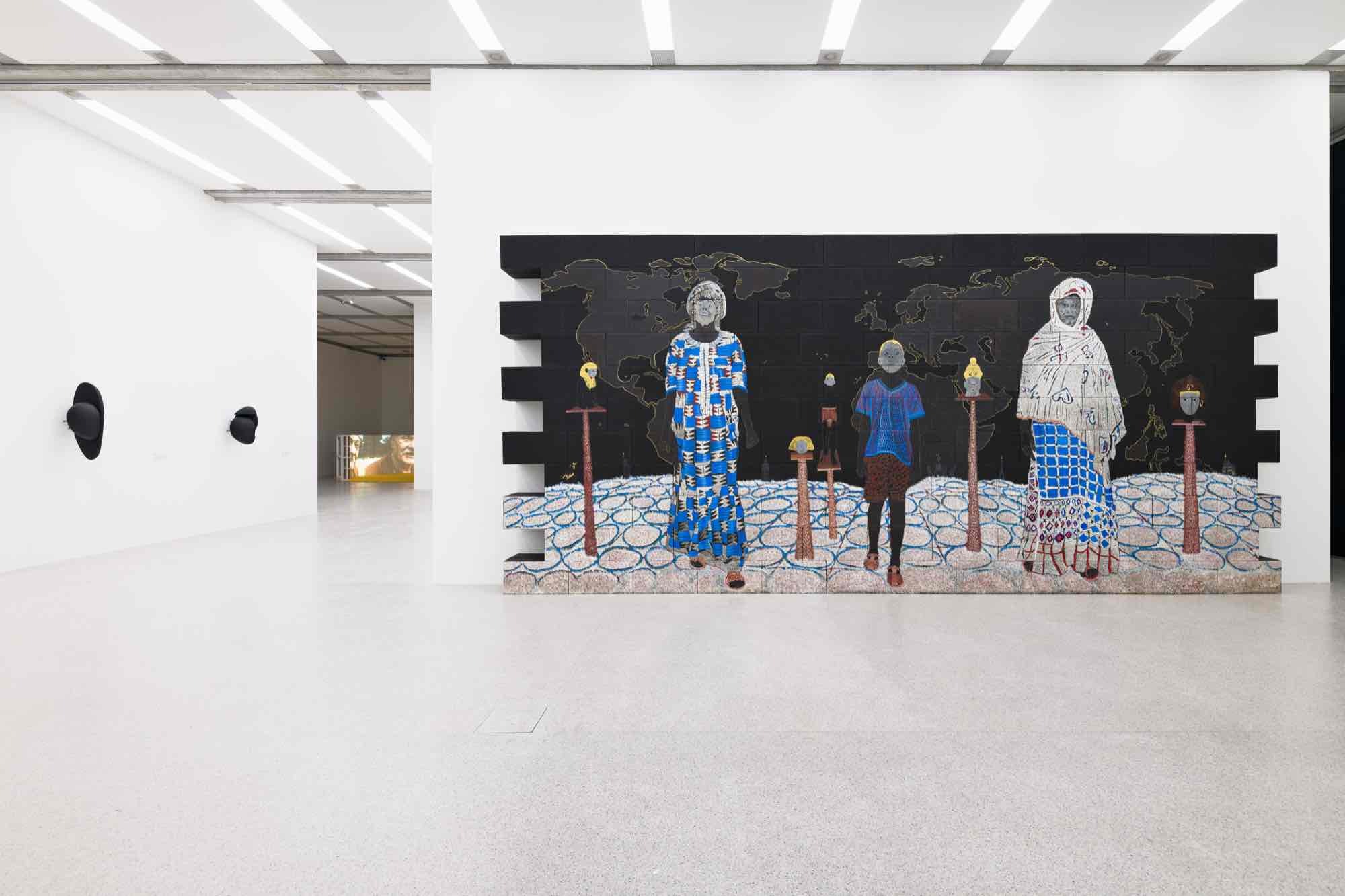
Exhibition view: Avant-Garde and Liberation. Contemporary Art and Decolonial Modernism, June 7, to September 22, 2024
Iman Issa, Self-Portrait (Self as Taha Hussein), 2020
Iman Issa, Self-Portrait (Self as Doria Shafik), 2020
Mohamed Bourouissa, The Whispering of Ghosts, 2018
Omar Ba, Clin d‘oeil à Cheikh Anta Diop – Un continent à la recherche de son histoire, 2017
Photo: Georg Petermichl / mumok
Iman Issa, Self-Portrait (Self as Taha Hussein), 2020
Iman Issa, Self-Portrait (Self as Doria Shafik), 2020
Mohamed Bourouissa, The Whispering of Ghosts, 2018
Omar Ba, Clin d‘oeil à Cheikh Anta Diop – Un continent à la recherche de son histoire, 2017
Photo: Georg Petermichl / mumok
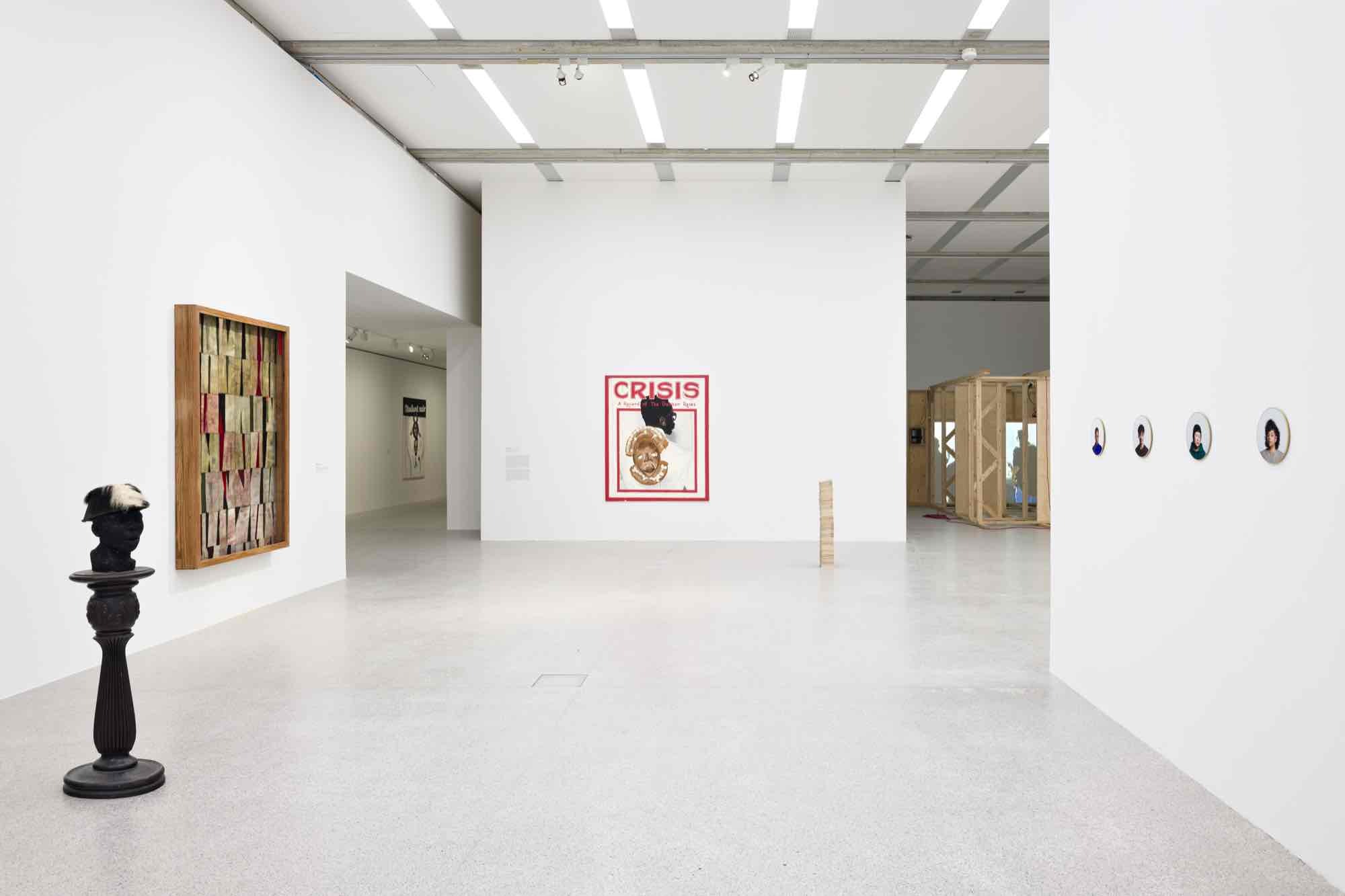
Exhibition view: Avant-Garde and Liberation. Contemporary Art and Decolonial Modernism, June 7, to September 22, 2024
Radcliffe Bailey, Untitled, 2010
Radcliffe Bailey, Mahalia, 2021
Fahamu Pecou, Real NEGUS do Real Things, 2012
Fahamu Pecou, Corps perdu, l'ȃme se retrouve, 2012
Zoe Leonard, Tipping Point, 2016
wiliam cordova, this one‘s 4U (pa‘ nosotros), 2008–2015
Janine Jembere, Channeling (Vienna), 2023
Photo: Georg Petermichl / mumok
Radcliffe Bailey, Untitled, 2010
Radcliffe Bailey, Mahalia, 2021
Fahamu Pecou, Real NEGUS do Real Things, 2012
Fahamu Pecou, Corps perdu, l'ȃme se retrouve, 2012
Zoe Leonard, Tipping Point, 2016
wiliam cordova, this one‘s 4U (pa‘ nosotros), 2008–2015
Janine Jembere, Channeling (Vienna), 2023
Photo: Georg Petermichl / mumok
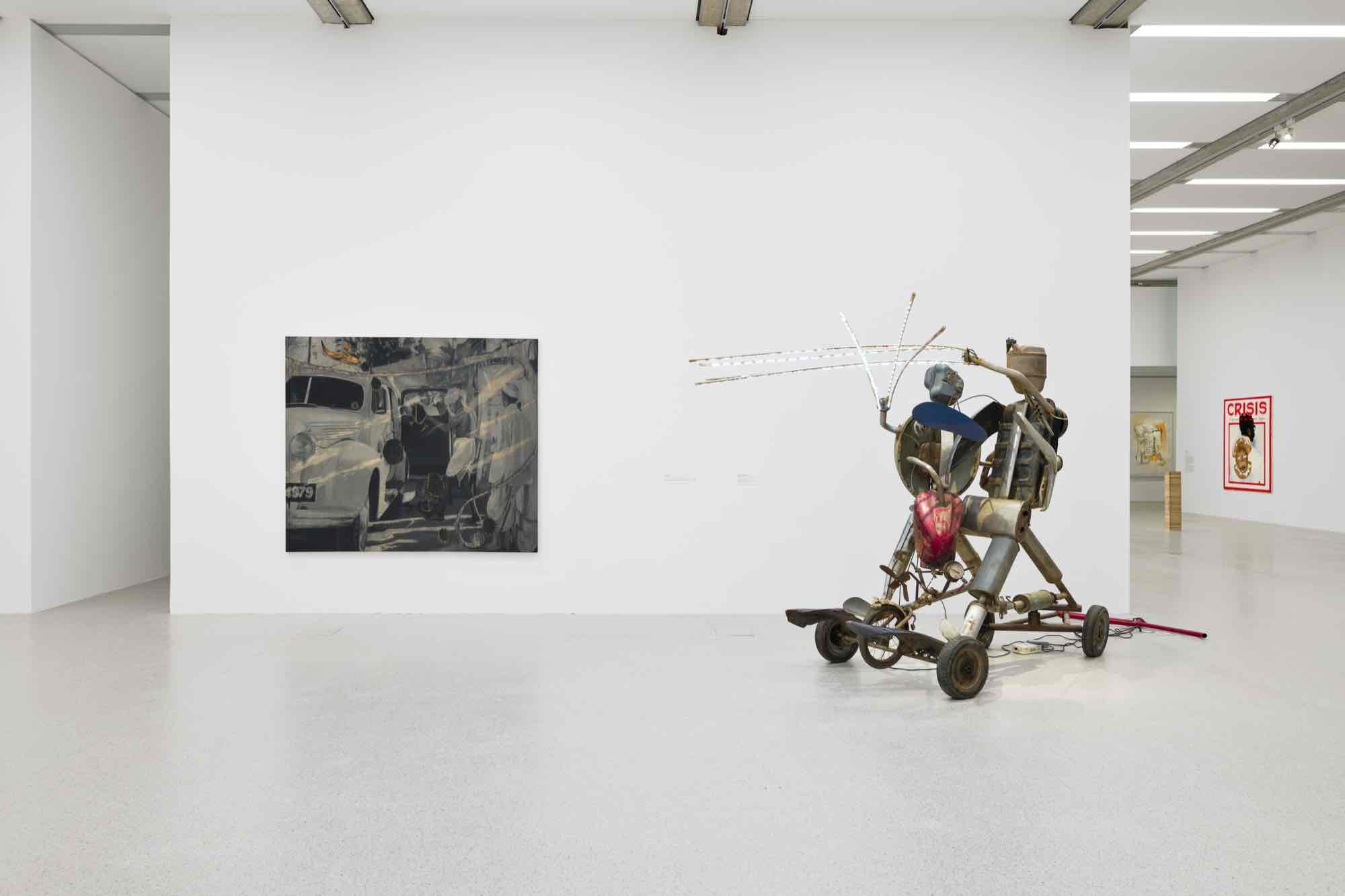
exhibition view: Avant-Garde and Liberation. Contemporary Art and Decolonial Modernism, June 7, to September 22, 2024
Atul Dodiya, Mahatma Gandhi entering G D Birla’s Packard, 2016 – 2018
Vivan Sundaram, Mill Re-Call, 2015
Fahamu Pecou, gun Dance 04, 2016
Zoe Leonard, Tipping Point, 2016
Fahamu Pecou , Corps Perdu, l'ȃme se Retrouve, 2012
Photo: Georg Petermichl / mumok
Atul Dodiya, Mahatma Gandhi entering G D Birla’s Packard, 2016 – 2018
Vivan Sundaram, Mill Re-Call, 2015
Fahamu Pecou, gun Dance 04, 2016
Zoe Leonard, Tipping Point, 2016
Fahamu Pecou , Corps Perdu, l'ȃme se Retrouve, 2012
Photo: Georg Petermichl / mumok

Exhibition view: Avant-Garde and Liberation. Contemporary Art and Decolonial Modernism, June 7, to September 22, 2024
Atul Dodiya, Volunteers at the Congress House—August 1931, 2014
Vivan Sundaram, One and the Many, 2024
Iman Issa, Self-Portrait (Self as Ananda K. Coomaraswamy), 2022
Photo: Georg Petermichl / mumok
Atul Dodiya, Volunteers at the Congress House—August 1931, 2014
Vivan Sundaram, One and the Many, 2024
Iman Issa, Self-Portrait (Self as Ananda K. Coomaraswamy), 2022
Photo: Georg Petermichl / mumok
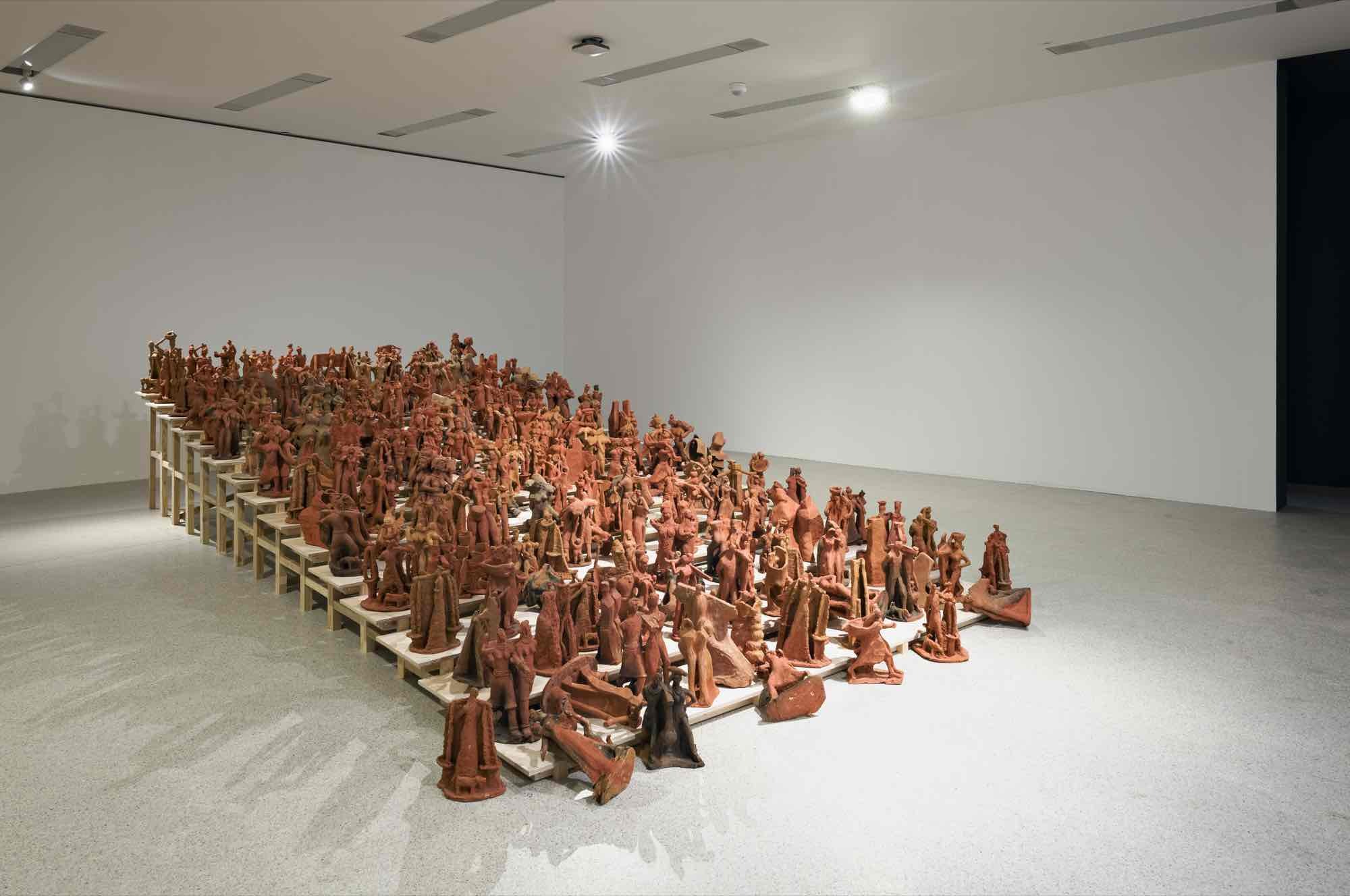
Exhibition view: Avant-Garde and Liberation. Contemporary Art and Decolonial Modernism, June 7, to September 22, 2024
Vivan Sundaram, One and the Many, 2024
Photo: Georg Petermichl / mumok
Vivan Sundaram, One and the Many, 2024
Photo: Georg Petermichl / mumok
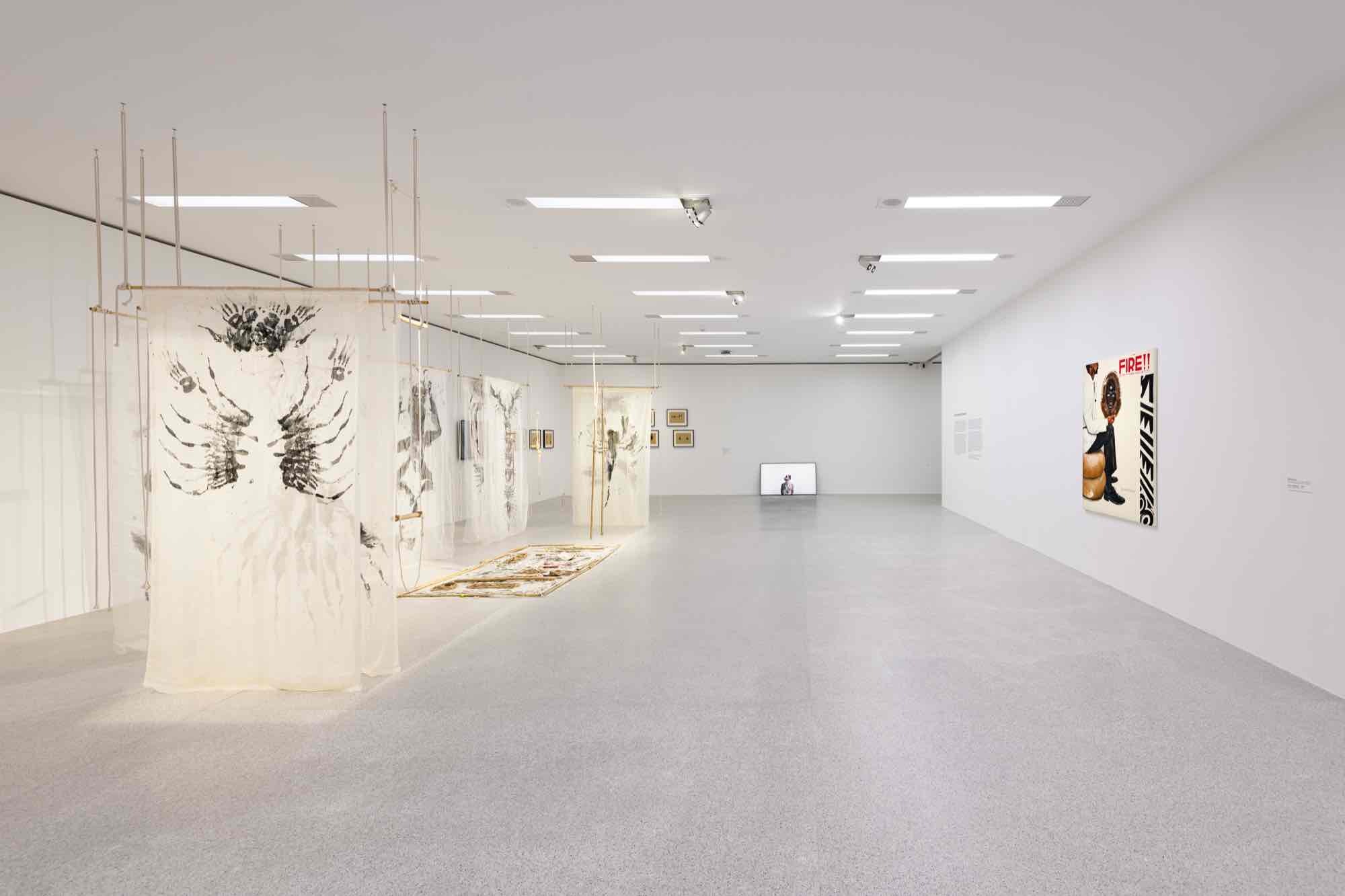
Exhibition view: Avant-Garde and Liberation. Contemporary Art and Decolonial Modernism, June 7, to September 22, 2024
Robert Gabris, Insectopia, 2020
Robert Gabris, Insectopia, 2020/2021
Robert Gabris, Insectology in my Body, 2020
Fahamu Pecou, Return to My Native…, 2012
Photo: Georg Petermichl / mumok
Robert Gabris, Insectopia, 2020
Robert Gabris, Insectopia, 2020/2021
Robert Gabris, Insectology in my Body, 2020
Fahamu Pecou, Return to My Native…, 2012
Photo: Georg Petermichl / mumok
The exhibition Avant-Garde and Liberation highlights the significance of global modernism for contemporary art. It raises questions of the political circumstances that move contemporary artists to resort to those non-European avant-gardes that formed as a counterpart of the dominant Western modernism from the 1920s to the 1970s. What are the potentials artists see in the ties to decolonial avant-gardes in Africa, Asia, and the “Black Atlantic” region, to take a stand against current forms of racism, fundamentalism, or neocolonialism? Which artistic methods are employed when addressing subjects such as the encroachment on personal liberties and social cohesion by drawing on seminal anticolonial and antiracist positions of the early to mid-twentieth century?
The exhibition was conceived by Christian Kravagna, Professor of Postcolonial Studies at the Academy of Fine Arts Vienna, who has already acted as an advisor and curator for mumok in recent years.
Dealing with current crisis phenomena by referencing artistic, literary, and activist avant-gardes of the twentieth century is an approach that can be found in various regions and cultural contexts. In reaction to the racism and killing of Black people by the police in the United States, African American artists like Fahamu Pecou and Cauleen Smith recall emancipatory forms of expression that emerged during the Civil Rights Movement. They hark back to the Harlem Renaissance of the 1920s as the first manifestation of Black modernism or the activist and aesthetic legacy of revolutionary movements like Black Power in the 1960s. In light of neocolonial economies, African artists reference photographers and musician-activists whose works stand for the liberation of African post-war societies. Serge Attukwei Clottey and Moffat Takadiwa should be named as examples. North African artists like Yto Barrada and Mohamed Bourouissa quote pioneers of the Arabic modernism of the 1950s and ’60s or update the writings of anticolonial authors like Frantz Fanon.
In European societies marked by migrant crises and neofascisms, artists like Mathieu Kleyebe Abonnenc and patricia kaersenhout reconstruct anticolonial film aesthetics and feminist contributions to the Négritude movement. Indian artists, such as Atul Dodiya and Vivan Sundaram, react to the Hindu nationalist erosion of secular democracy with recourse to cosmopolitan projects of Rabindranath Tagore or works by sculptor Ramkinkar Baij from the time of the independence movement.
Showcasing several works by more than twenty-four artists from South Asia, Africa, Europe, and America, Avant-Garde and Liberation offers a glimpse of global modernism through the prism of their pertinence for contemporary art. In the complex tangle of past and present, the exhibition reflects on questions of temporality as well as the possibility of engaging with old and new liberation movements. Ultimately, the global network of historical references allows for a necessary revision of the concept of Avant-Garde, which is still dominated by its European interpretation. In addition to its political dimension, the exhibition also pays homage to those contemporary artists who recall marginalized avant-gardes beyond the Eurocentric notion of modern art.
Artists: Mathieu Kleyebe Abonnenc, Omar Ba, Radcliffe Bailey, Yto Barrada, Mohamed Bourouissa, Diedrick Brackens, Serge Attukwei Clottey, william cordova, Atul Dodiya, Robert Gabris, Jojo Gronostay, Leslie Hewitt, Iman Issa, Janine Jembere, patricia kaersenhout, Belinda Kazeem-Kamiński, Zoe Leonard, Vincent Meessen, The Otolith Group, Fahamu Pecou, Cauleen Smith, Maud Sulter, Vivan Sundaram, Moffat Takadiwa
Curated by Christian Kravagna, co-curated by Matthias Michalka
The exhibition was conceived by Christian Kravagna, Professor of Postcolonial Studies at the Academy of Fine Arts Vienna, who has already acted as an advisor and curator for mumok in recent years.
Dealing with current crisis phenomena by referencing artistic, literary, and activist avant-gardes of the twentieth century is an approach that can be found in various regions and cultural contexts. In reaction to the racism and killing of Black people by the police in the United States, African American artists like Fahamu Pecou and Cauleen Smith recall emancipatory forms of expression that emerged during the Civil Rights Movement. They hark back to the Harlem Renaissance of the 1920s as the first manifestation of Black modernism or the activist and aesthetic legacy of revolutionary movements like Black Power in the 1960s. In light of neocolonial economies, African artists reference photographers and musician-activists whose works stand for the liberation of African post-war societies. Serge Attukwei Clottey and Moffat Takadiwa should be named as examples. North African artists like Yto Barrada and Mohamed Bourouissa quote pioneers of the Arabic modernism of the 1950s and ’60s or update the writings of anticolonial authors like Frantz Fanon.
In European societies marked by migrant crises and neofascisms, artists like Mathieu Kleyebe Abonnenc and patricia kaersenhout reconstruct anticolonial film aesthetics and feminist contributions to the Négritude movement. Indian artists, such as Atul Dodiya and Vivan Sundaram, react to the Hindu nationalist erosion of secular democracy with recourse to cosmopolitan projects of Rabindranath Tagore or works by sculptor Ramkinkar Baij from the time of the independence movement.
Showcasing several works by more than twenty-four artists from South Asia, Africa, Europe, and America, Avant-Garde and Liberation offers a glimpse of global modernism through the prism of their pertinence for contemporary art. In the complex tangle of past and present, the exhibition reflects on questions of temporality as well as the possibility of engaging with old and new liberation movements. Ultimately, the global network of historical references allows for a necessary revision of the concept of Avant-Garde, which is still dominated by its European interpretation. In addition to its political dimension, the exhibition also pays homage to those contemporary artists who recall marginalized avant-gardes beyond the Eurocentric notion of modern art.
Artists: Mathieu Kleyebe Abonnenc, Omar Ba, Radcliffe Bailey, Yto Barrada, Mohamed Bourouissa, Diedrick Brackens, Serge Attukwei Clottey, william cordova, Atul Dodiya, Robert Gabris, Jojo Gronostay, Leslie Hewitt, Iman Issa, Janine Jembere, patricia kaersenhout, Belinda Kazeem-Kamiński, Zoe Leonard, Vincent Meessen, The Otolith Group, Fahamu Pecou, Cauleen Smith, Maud Sulter, Vivan Sundaram, Moffat Takadiwa
Curated by Christian Kravagna, co-curated by Matthias Michalka
